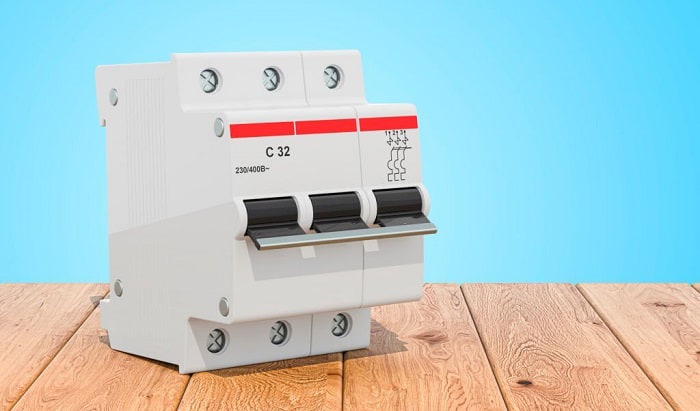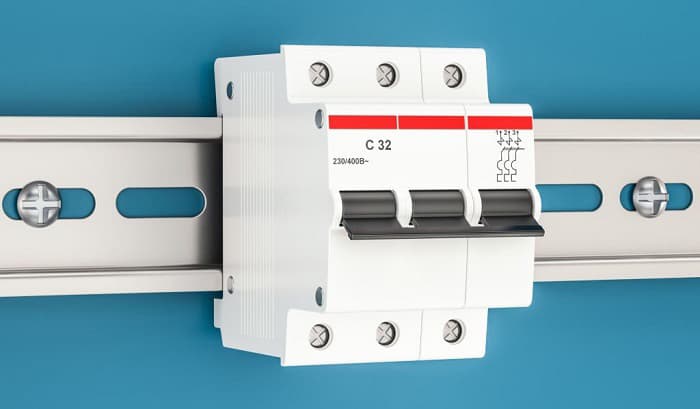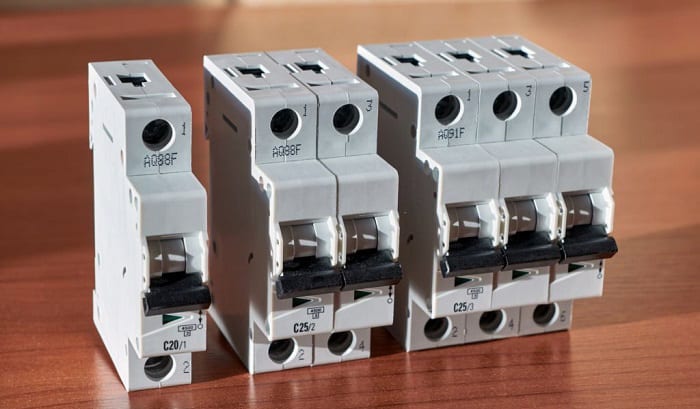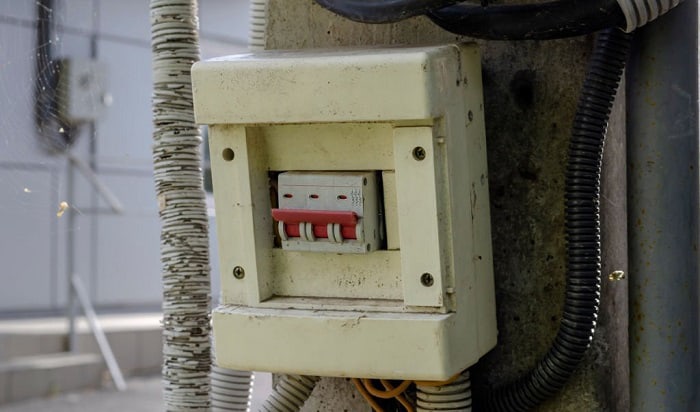You’re trying to set up the ideal electrical network for your heavy equipment and came across the need for a circuit breaker with three poles. But what is a 3 pole breaker?
A 3-pole circuit breaker generally has a 30 amp capacity. But different models typically have varying voltage ratings that often range from 120 to 480 volts. This fairly high power limit can make it good for heavy equipment usage.
Continue reading to gain additional insight into 3-pole circuit breakers and their usage.
Table of Contents
- What Does 3-Pole Mean on a Circuit Breaker?
- How Does a 3 Pole Breaker Work?
- How Many Wires Can Be in a 3 Pole Breaker?
- How Many Volts in a 3- Pole Breaker?
- How to Wire a 3-Pole Breaker
- Can a 3 Pole Breaker Be Used in a 2 Pole Application?
- What is the Difference Between a 3 Pole Vs 3-Phase Breaker?
- Frequently Asked Questions
- Conclusion
What Does 3-Pole Mean on a Circuit Breaker?
A three pole breaker typically supplies 480 Volts of Alternating Current (VAC) to connected devices or equipment. As its name implies, it uses three wires for power delivery through three separate switches.
In comparison, a single-pole breaker will often only supply about 120VAC for three-wire terminals and 240VAC for two hot wires. The higher voltage rating capacity offered by the 3-pole circuit breaker makes it ideal to use in commercial and industrial facilities.
How Does a 3 Pole Breaker Work?
A 3 poles circuit breaker typically works like a standard breaker. If this circuit breaker receives a higher electrical current than its capacity, it’ll trip and prevent damage to the connected equipment.
However, the higher amperage and voltage capacity from the number of conductors makes it an excellent choice to use in a three-phase electrical setup.
A usage example of an arrangement that uses a 3-pole breaker is to connect this unit to a water heater, air compressor, or air conditioner.
How Many Wires Can Be in a 3 Pole Breaker?
As its name implies, the typical wiring diagram of a 3-pole circuit breaker uses three live wires.
How Many Volts in a 3- Pole Breaker?
3-pole circuit breakers often have varying ratings, such as 240V, 380V, and 400V. As you can see, these voltage ratings are reasonably high, providing sufficient and balanced power output to different motors and other pieces of equipment.
For example, a 3 pole 240v breaker would be the ideal choice for numerous applications, such as transformers. Plus, the typical 3-pole breaker has a 30-amp rating to fit NF service panels.
How to Wire a 3-Pole Breaker
Connecting wires to 3-pole circuit breakers is similar to forming single- or double-phase electrical frameworks. But some differences exist with this 3-pole setup, particularly for a three-phase circuit.
Here’s a quick guide for your reference:
- Step 1: Turn off the main circuit breaker in the electrical service panel.
- Step 2: Find the three hot wires going into the panel and loosen their terminals with a screwdriver.
- Step 3: Search for the ground wire. Then, place and secure it in the ground service bar.
- Step 4: Attach the two remaining wires to the circuit breaker and tighten them.
- Step 5: Turn on the main circuit breaker and test if the 3-pole breaker is functioning well.
Can a 3 Pole Breaker Be Used in a 2 Pole Application?
It’s possible to use a 3-pole circuit breaker for a 2-pole setup. But this breaker should be made to be used for single phase circuits that can use two poles.
Hence, users should pay attention to the type of device they’re using in their service panels. Certain 3-pole circuit breakers might not be compatible with this type of application.
What is the Difference Between a 3 Pole Vs 3-Phase Breaker?
The difference between a 3-pole and 3-phase circuit breaker generally lies in the terms used. “Phase” in this context indicates alternating current. On the other hand, “pole” stands for how the breaker creates the electricity to distribute.
So a 3-pole breaker means the circuit breaker uses three modules to create electrons to distribute power. As for the 3 phase breaker, it points to the way electricity is sent throughout homes – in three phases that are 120 degrees apart.
Frequently Asked Questions
What Is A 3-Pole Outlet?
First, keep in mind that a 3 pole outlet is different from a 3-pole circuit breaker. A 3-pole electrical outlet often requires a plug with three pins. The third pin typically functions by preventing electrical shocks that might be frequent in some devices.
Conclusion
By now, you should know the answer to “What is a 3 pole breaker?” Remember, this type of circuit breaker is good for providing and managing electrical currents for fairly large motors in pieces of heavy equipment.
Moreover, you can use some circuit breakers with three poles in single- or double-phase setups. But make sure that you check the device you have before installing it to avoid problems like incompatibility with your appliance.

I am Andrew Wright. With 8 years of experience designing, installing, and maintaining electrical power systems. I love my job, and I have always wanted to offer others the necessary help so they can take care of their houses.




